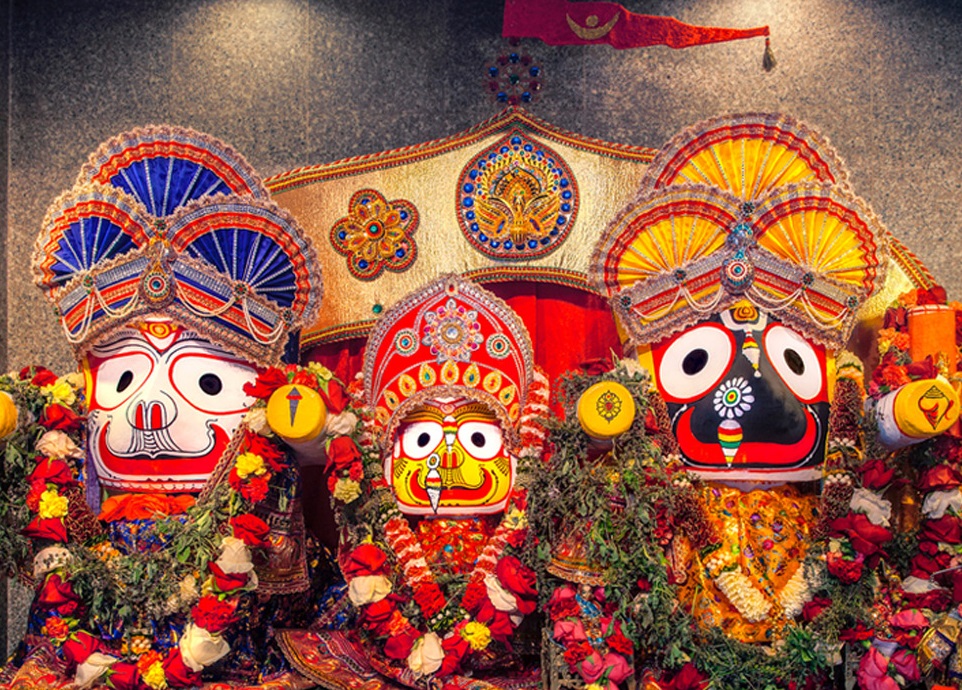Jagannath Temple in Puri is one of India’s oldest sanctuaries, having been begun by King Chodagangadeva and completed by his grandson Anangabhimadeva in the late twelfth century. It is not just famous for being old, but also for being India’s most religious site. Its religious esteem is on par with its importance as one of the Char Dham Yatra’s locations. Because it is a gift from Historical Times, there are various mysterious facts regarding the temple, such as:

1. The flag’s direction
The flag flown at the top of the temple dome is discovered to constantly flow in the opposite direction of the breeze.
To this day, this science-defying phenomenon remains unexplainable. The 20-foot-wide triangle flag is physically changed every day by skilled priests who climb atop the temple’s structure to do it. If this rite is neglected even for a day, it is stated that the temple will be shuttered for 18 years.
2. Rath Yatra
It is a Hindu pilgrimage that takes place every year.
The annual Rath Yatra is a chariot celebration in which the three gods mount their adorned chariots and travel through Puri’s streets to visit their maternal aunt in the Gundicha shrine. They return to the temple after seven days. Thousands of devotees flock from all over the world to see God emerge from the temple and bless his followers.
3. The chakra is the enormous chakra.
The Sudarshan Chakra, which stands at the temple’s tallest point and weighs a tonne, is 20 feet tall and weighs a tonne. It is believed to be visible from all sides of the city, and it is designed to make you feel as if it is looking at you no matter where you are. No one is aware of the method used to implant the chakra.
Fun fact: 2000 years ago, the chakra was hauled all the way up and installed on the gopuram. The design processes used at the time are still a mystery today.
4. The Main Building’s Shadow
The fact that the temple’s main building casts no shadows at any time of day is one of the temple’s most well-known mysteries.
The Puri Jagannath Temple covers 4 lakh square feet and rises to a height of 214 feet, however, it casts no shadow at any time of day.
5. Waves of Sound
The Sea is only a short distance from the Jagannath Temple. The sound of the waves crashing on the beach may be heard clearly from the temple courtyard.
However, no sound of the waves can be heard until one enters the main entrance (i.e. inside the Singha Dwar).
Many of them feel that this occurs because Subhadra desires perfect tranquility in her surroundings.
6. The Mysterious Prasadam
Thousands of people visit this holy spot every year. The days of the Rathyatra, or Jagannath worship, attract a larger number of pilgrims than other days. However, the same amount of food (Jagannath Prasadam) is prepared every day. Food does not go to waste on any of the days, and none of the devotees go hungry. Jagannath’s “Prasadam” is prepared in seven pots that are stacked one on top of the other. Surprisingly, though, the food in the top-of-the-pot cooks first.
7. Above the shrine, no planes or birds fly
No birds or planes fly above the shrine, which will surprise you. Any other temple in India, on the other hand, lacks such a feature. Actually, the location is a no-fly zone that has been declared by some divine power rather than by any national authority. Apparently, there is no explanation for this phenomenon.
8. The sea’s mystique
You’ve probably noticed that the wind from the sea blows toward the land during the day, while the wind from the land blows toward the sea in the evening. Whereas in Puri, the geographical rules are inverted. In this scenario, the exact opposite happens.
9. Gods’ Resurrection
The term nabakalebara refers to the Gods’ rebirth into new bodies as they adorn new bodies in the temple. Every 12th to 19th year, the performance is held. The ‘Daitapatis,’ or Lord Jagannatha’s initial worshippers, are primarily responsible for it. The Daitapatis blindfold themselves and transfer the soul, or “Brahma Padartha,” from ancient deities to new idols.




































